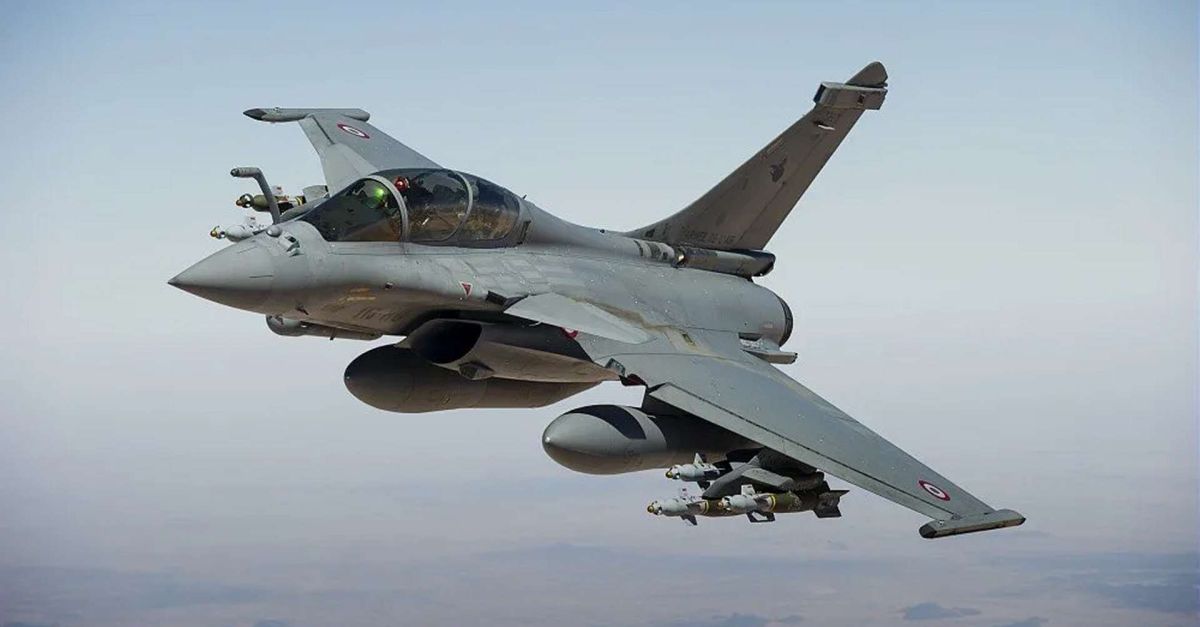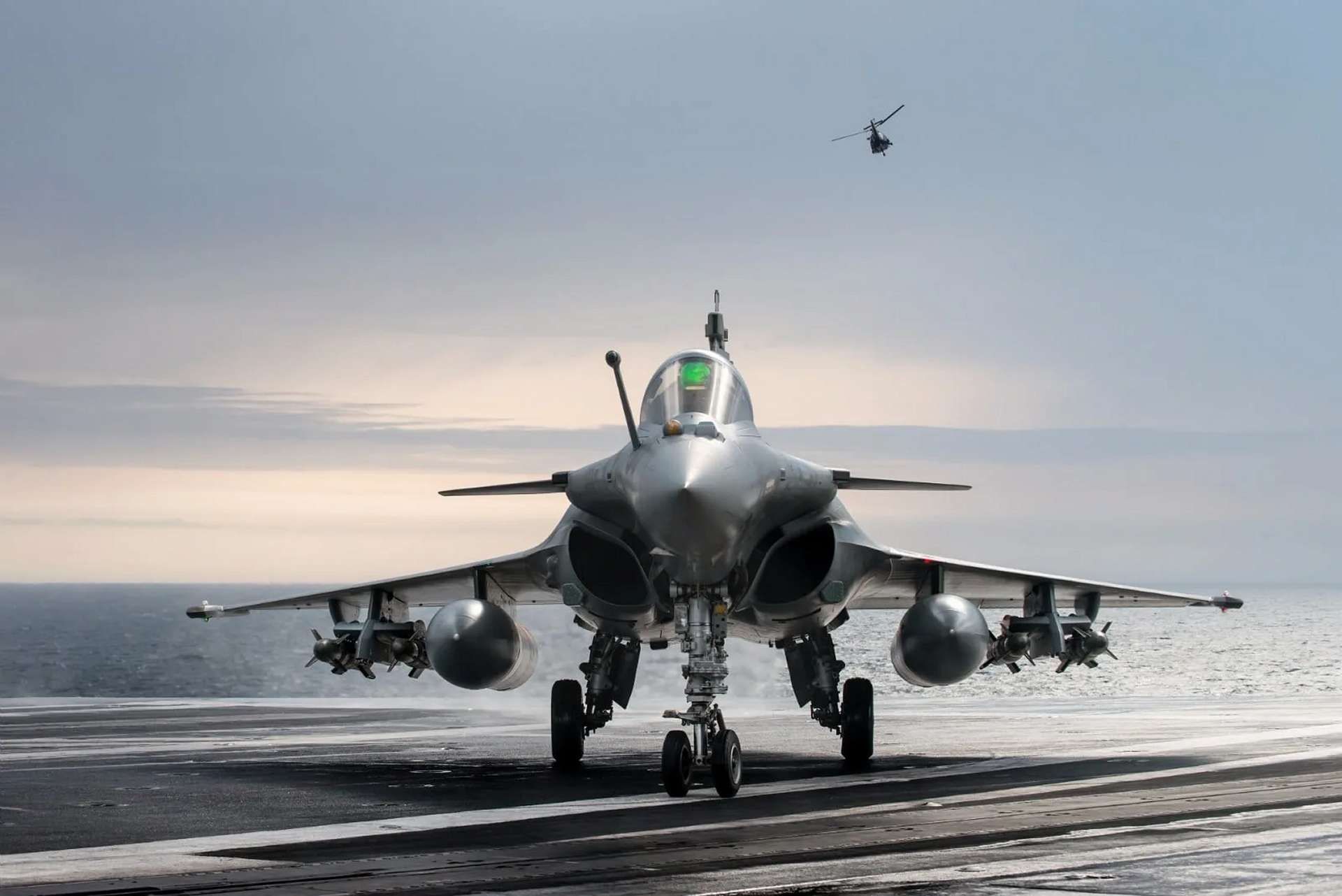Breaking News
Dassault CEO hints at another Rafale fighter jet sale by end of 2024.
In an interview with Europe 1 on August 30, 2024, Éric Trappier, Chairman and CEO of Dassault Aviation, announced the possibility of a new contract for the sale of French Rafale fighter jets by the end of the year. This announcement follows a recent agreement between France and Serbia for the sale of twelve Rafale aircraft, signed during French President Emmanuel Macron's visit to Belgrade. The contract with Serbia is part of broader economic agreements aimed at strengthening ties between the two nations.
Follow Army Recognition on Google News at this link

As of 2024, the Rafale is operated by several countries, including France, Egypt, Qatar, India, Greece, and Croatia, with Indonesia, the United Arab Emirates, and Serbia set to become future operators. (Picture source: Dassault Aviation)
Serbia is now the fourth European country to acquire Rafale fighter jets, joining France, Greece, and Croatia. This contract represents a strategic development between France and Serbia, a country that maintains close ties with Russia. Trappier discussed the significance of this contract in an exclusive interview with Europe 1 Soir week-end, providing insights into the sale and outlining future plans for Dassault Aviation.
The agreement with Serbia is valued at approximately 2.7 billion euros, with the delivery of the aircraft scheduled for 2028 and 2029. Trappier noted that this contract contributes to the growing number of Rafale orders, which now total 507 worldwide. He compared the current success of the Rafale to that of the Mirage 2000, another aircraft that initially struggled to gain traction in the global market but eventually achieved significant sales.
Dassault Aviation is currently in discussions with other countries for potential new contracts. Trappier indicated that another contract could be secured by the end of the year, describing it as a challenge that would contribute to the company's long-term stability. He also emphasized the role of such contracts in supporting the national aerospace industry and their economic impact, particularly on the purchasing power of employees in the sector.
According to La Tribune on September 3, 2024, India is likely to be the country behind a potential new contract for the sale of Rafale fighter jets. The prospective deal could involve the sale of 26 Rafale Marine jets intended to equip the INS Vikrant, India's first aircraft carrier built domestically. As reported by Army Recognition, in 2023, India was in negotiations with France over a $6 billion deal to acquire 26 Rafale Marine fighter jets, which would include 22 single-seat and 4 twin-seat trainer versions, to strengthen the capabilities of its aircraft carriers, INS Vikrant and INS Vikramaditya.

The Rafale comes in three primary variants, including the Rafale M, a single-seat carrier-based version for the French Navy, which includes modifications such as a reinforced undercarriage and arrestor hook for shipboard operations. (Picture source: Dassault Aviation)
The Dassault Rafale is a French twin-engine, canard delta-wing, multirole fighter aircraft developed by Dassault Aviation. Its development began in the late 1970s when the French Air Force and Navy needed a new aircraft to replace their aging fleets. Initially, France partnered with other European nations to develop a "Future European Fighter Aircraft," but disagreements over specifications and work distribution led France to pursue its own design. Dassault produced a technology demonstrator, the Rafale A, which first flew in 1986. Despite delays caused by budget constraints following the end of the Cold War, the Rafale entered service in 2001. Since then, it has participated in combat operations in Afghanistan, Libya, Mali, Iraq, and Syria.
The Rafale was designed to provide high maneuverability and multirole capability. It combines a delta wing with canards to enhance agility and aerodynamic efficiency. The aircraft is equipped to perform a wide range of missions, including air-to-air combat, ground attack, reconnaissance, anti-ship strikes, and nuclear deterrence. Key features include the Thales RBE2 active electronically scanned array (AESA) radar, the Optronique Secteur Frontal infrared search and track (IRST) system, and the SPECTRA electronic warfare suite. The airframe makes extensive use of composite materials to reduce weight and radar cross-section. The Rafale's modular design allows for ongoing upgrades to its systems and weaponry.
The Rafale comes in three primary variants: the Rafale C, a single-seat version for the French Air Force; the Rafale B, a two-seat version for the Air Force designed for training and strike missions; and the Rafale M, a single-seat carrier-based version for the French Navy, which includes modifications such as a reinforced undercarriage and arrestor hook for shipboard operations. Export versions have been developed for various customers, including Egypt, India, and Qatar, with designations like Rafale DM (two-seater) and EM (single-seater) for Egypt, and Rafale DH and EH for India.

Powered by two Snecma M88-4e turbofan engines, the Rafale can reach a maximum speed of Mach 1.8 at high altitudes, a combat range of 1,850 km, and can maintain a supercruise speed of Mach 1.4 with a standard weapons load. (Picture source: Dassault Aviation)
The Rafale has been employed in various combat missions, including air support, reconnaissance, and strike missions in Afghanistan, Libya, Iraq, Mali, and Syria. It is equipped with a 30mm GIAT 30 cannon and can carry a range of weapons, such as MICA and Meteor air-to-air missiles, SCALP cruise missiles, AASM precision-guided bombs, Exocet anti-ship missiles, and ASMP-A nuclear missiles. The aircraft features the SPECTRA electronic warfare suite for threat detection and countermeasures. It is capable of performing multiple roles in a single mission, such as combining air-to-air combat and ground attack tasks.
The Rafale has a length of 15.27 meters, a wingspan of 10.90 meters, and a maximum takeoff weight of 24,500 kg. It is powered by two Snecma M88-4e turbofan engines, each providing 50 kN of dry thrust and 75 kN with afterburners, enabling a maximum speed of Mach 1.8 at high altitudes. The aircraft has a combat range of 1,850 km and can maintain a supercruise speed of Mach 1.4 with a standard weapons load. It can sustain g-forces from -3.6g to +9g, with a maximum of +11g in emergencies. The Rafale is equipped with 14 hardpoints (13 for the naval version) for various armaments and fuel tanks, allowing a total payload of up to 9,500 kg.
As of 2024, the Rafale is operated by several countries. France is the largest operator, with 234 units ordered for the French Air and Space Force and Navy, and approximately 150 delivered. Egypt has ordered 54 Rafales, and Qatar has received 36. India operates 36 Rafales, and Greece has received 18 of the 24 it ordered. Croatia has purchased 12 used Rafales. Future operators include Indonesia, with an order for 42 Rafales, and Serbia, which has ordered 12. The United Arab Emirates has signed a contract for 80 Rafales, making it the largest foreign customer.

The Rafale has been employed in various combat missions, including air support, reconnaissance, and strike missions in Afghanistan, Libya, Iraq, Mali, and Syria. (Picture source: Dassault Aviation)


























